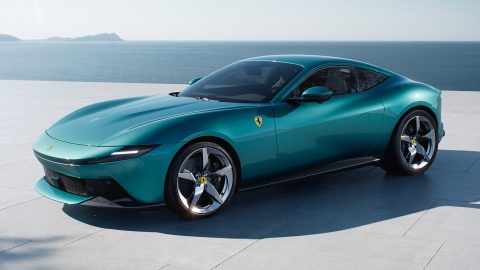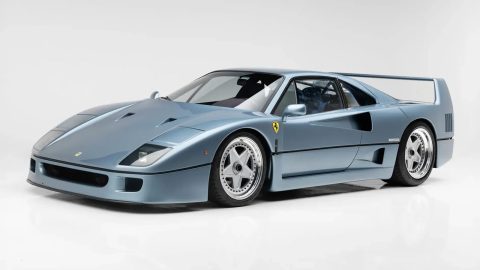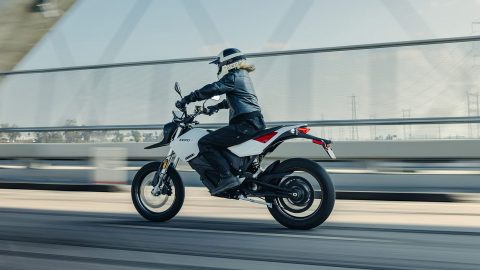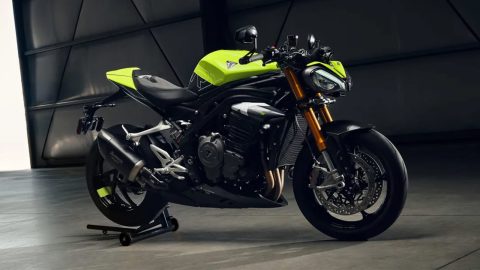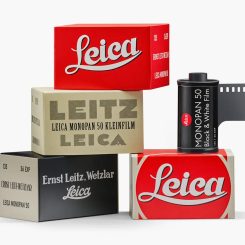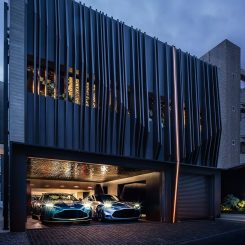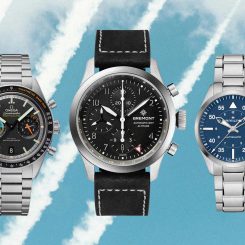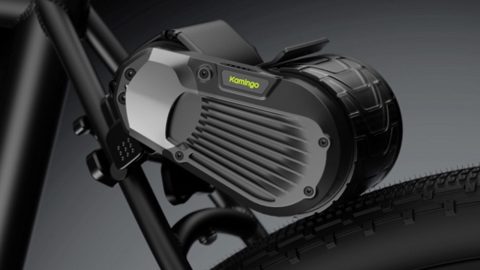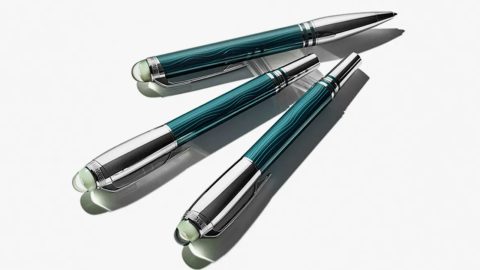It’s rare to meet someone who has an appreciation for automobiles and not motorcycles. You don’t have to be a leather-clad biker with road rash scars to like motorcycles. Hell, you don’t even need to know how to ride one to understand that bikes are one of the purest expressions of freedom on wheels.
The potential dangers are apparent, but that doesn’t take away from the allure of hitting the open road on a steel horse. Like cars and trucks, motorcycles can fit any lifestyle – whether you actually live it or merely visit on the weekends. Here, we’ll dive into the history of famed Italian sports bike manufacturer Ducati. Explore the motorcycles, new and old, that helped create the brand’s legacy for pulse-racing performance.
Ducati’s history can trace its roots back to 1926, founded by a father and three sons in Bologna, Italy. Before Ducati made a name for itself as a premier superbike brand, it was a radio equipment manufacturer. All that changed when the world went to war – again. During the war, Ducati’s warehouse was bombed by the Allies in 1944. Ducati had to rise up from its demolished factory’s ruins and find a new way to survive in post-war Europe.
During the war, Ducati’s warehouse was bombed by the Allies in 1944. Ducati had to rise up from its demolished factory’s ruins and find a new way to survive in post-war Europe.
According to Motorcycle, Ducati’s induction into the world of two-wheeled transportation started in 1946. Thanks to the invention of a 50cc engine designed by Aldo Farinelli. The tiny engine was dubbed the Cucciolo, which translates to Pup in Italian. The Cucciolo was sold as an engine capable of motorizing ordinary bicycles and creating a cost-effective transportation means. Ducati started selling bikes with Cucciolo engines already installed.
By 1950, Ducati designed its own Cucciolo-inspired motorbike. Thus, the first official Ducati motorcycle was born weighing 98lbs and powered by a 48cc engine capable of speeds up to 40 mph. Ducati would later drop the Cucciolo nameplate and rebrand the motorbike as the 55M.
Ducati’s reputation for delivering quality high-performance motorcycles can be attributed to one engineer, Fabio Taglioni, who worked as Ducati’s chief designer and technical engineer from 1954 to 1989. Taglioni was the engineer who adopted the desmodromic valve design and developed the famous “L” twin-cylinder engine that became Ducati’s signature at the start of the 1970s.
The two-cylinder, four-stroke 90-degree V-twin engine got the name L-twin because Taglioni designed it with one cylinder placed vertically while the second cylinder placed horizontal, giving it the impression of the letter “L.” The L-twin engine became a stable of Ducati motorcycles for decades and is still being used today.
Famous Ducati Motorcycles
Going through Ducati’s catalog of famous motorcycles would turn this article into an online book. However, a handful of examples deserve mention when discussing Ducati’s history in motorcycle culture. These bikes usually brought in a new era for Ducati or became a high-performing hit in pop culture.
Going through Ducati’s catalog of famous motorcycles would turn this article into an online book. However, a handful of examples deserve mention when discussing Ducati’s history in motorcycle culture.
Before 1970, Ducati was already winning headlines in the racing world thanks to Taglioni’s engines. By this time, the two-wheeled consumer wanted more speed as the dawn of the superbike was rapidly taking flight. Ducati’s response to this was the introduction of the 1971 Ducati 750 GT. What makes this bike so significant is being the first production bike to use Taglioni’s then-newly designed L-Twin engine. The Ducati built around 4,000 of these bikes until 1974, with a limited production run of 40 in 1978. The Ducati 750 GT is considered a collector’s item in today’s vintage motorcycle market.
The 1980s saw the debut of the Ducati Pantah, debuting in 1979 and staying in production from 1980 to 1986. The Pantah was the first Ducati motorcycle to feature a belt-driven camshaft engine. Before the Pantah, the standard method of moving the camshafts was bevel gears. Forums may argue as to which method is superior, but the point of the Pantah was that it started a foundation for all modern Ducati motorcycles.
The 2003-2006 Ducati 999 is the bike most people unfamiliar with the brand think of when they hear the word “Ducati.” It’s a big red superbike with three Superbike World Championships under its drive belt. The Ducati 999 was the last in a range of superbikes that started with the Ducati 916, followed by the 996 and 998.
When it debuted in 2003, many Ducati fans used to the previous design standard did not like the 999’s radical by comparison appearance. Some people called the 999 ugly, but nobody could ignore its performance on the track. In 2005, a higher performance variant of the 999 was named the Ducati 999S. Critics hailed it as being the best V-twin on the planet.
Some people called the 999 ugly, but nobody could ignore its performance on the track.
Last on this list of famous Ducati motorcycles is the Ducati Scrambler, a bike with two phases in its history. The first started in 1962 when an international motorcycle importer named Joseph Berliner came up with the idea for a range of single-cylinder motorcycles to be imported into the U.S. The Ducati Scrambler was offered in several engine displacements throughout the 1960s until its production ended in 1974.
The Scrambler name was brought back in 2015 as a line of Ducati motorcycles. Now, the Ducati Scrambler goal is to offer a more practical introduction to the Ducati brand. It’s a bike for customers who want a Ducati but don’t need a superbike and much rather have a bike more inclined with riding through forest trails and have some off-road capability with a retro-look. Current Ducati Scramblers come in eight different styles, from Café Racer to Desert Sled.
New Ducati Models for 2021
As we enter a new decade, Ducati is still holding strong under its parent company Audi, through Lamborghini, all of which fall under the Volkswagen Group. It offers an extensive range of motorcycles, with the newest models being the latest generation of Ducati Monster and the Ducati Multistrada V4.
In 1993, Ducati introduced the first Ducati Monster as a lightweight sports bike for the road capable of delivering the thrill and agility of a superbike. The 2021 Ducati Monster is powered by a 937cc Desmodromic Testastretta twin-engine producing 111 horsepower at 9,250 rpm and 68 lb-ft of torque at 6,500 rpm. This new model’s design is said to have taken inspiration from its 1993 predecessor. Comparing the two bikes side by side can feel like looking in the mirror, with the most significant change for 2021 is the full-LED headlamp, which still round like the original but looks far more technologically advanced.
The 2021 Ducati Multistrada V4 is meant to be an all-in-one motorcycle: a sports bike, enduro, grand touring, and urban commuter. It uses a four-cylinder Gran Turismo V4 engine producing 170 horsepower at 10,500 rpm and 92 lb-ft of torque at 8,750 pm—a Ducati bike designed to handle whatever terrain the road ahead may bring. Features on the 2021 Ducati Multistrada V4 include an assistance radar system to improve rider safety, an adjustable saddle for comfort, and electronic suspension with wide ground clearance.
Big Red Ducati
Ferrari isn’t the only motorsport winning red-painted speed machine to come out of Italy. Throughout Ducati’s motorsport involvement, it has won 17 manufacturer World Championships and 14 riders World Championships. The name Ducati has become synonymous with premium performance. Like most motorcycle manufacturers today, Ducati offers an extensive line of bikes to choose from, each one designed for a different purpose while sharing the same common goal – be fast.


